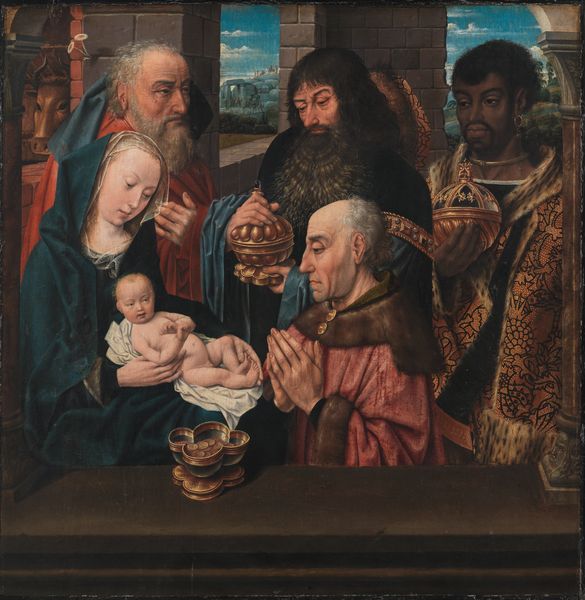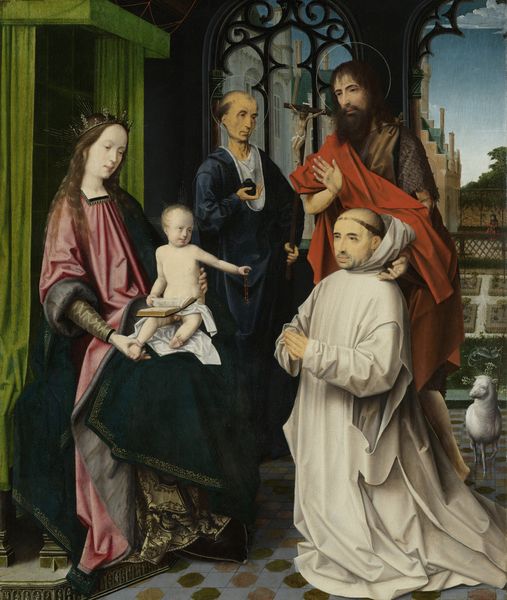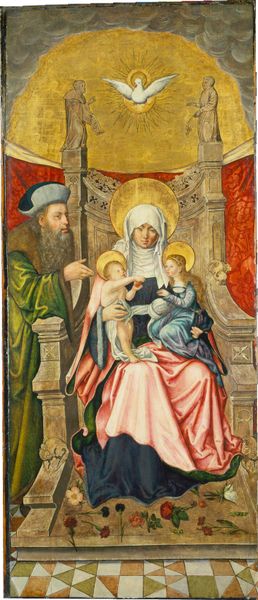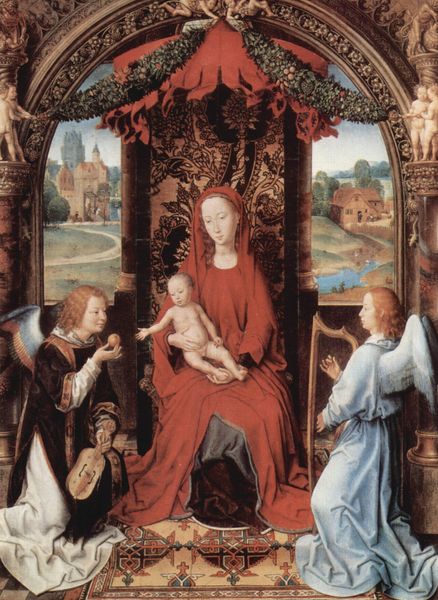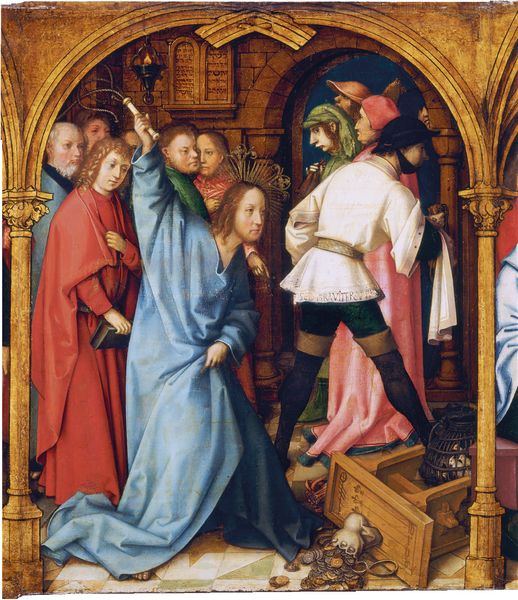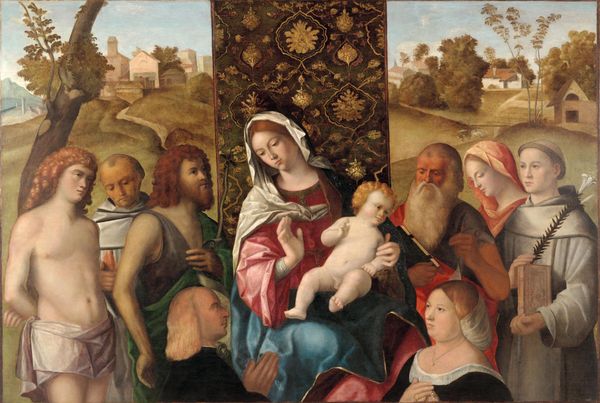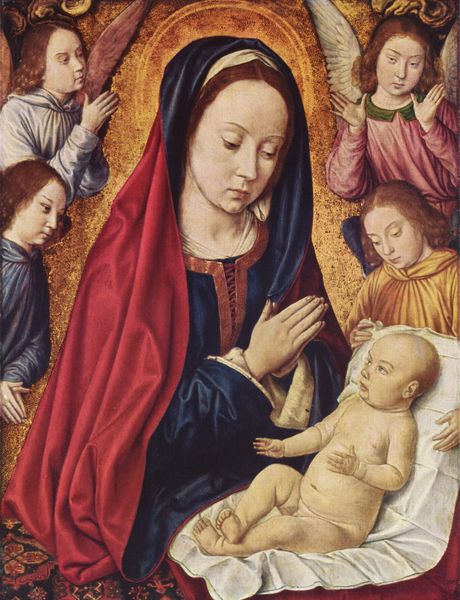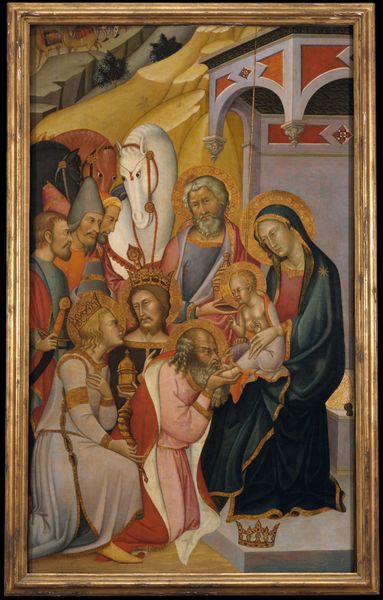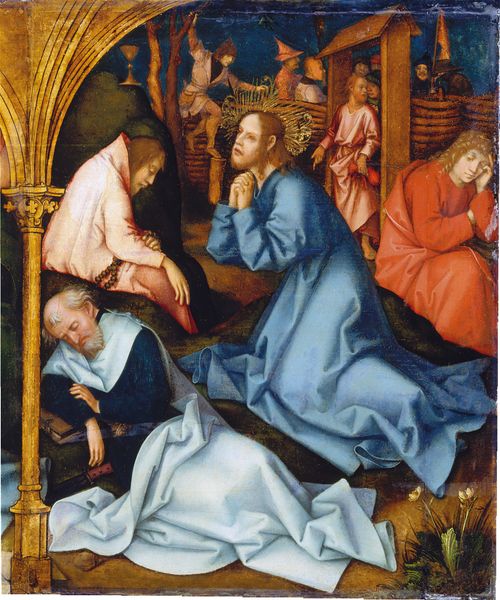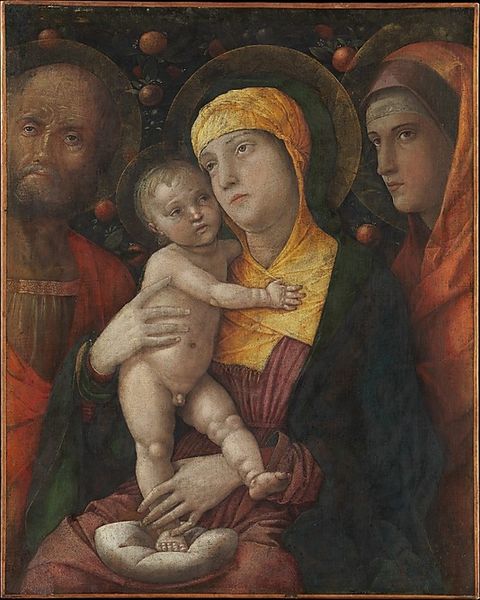
painting, oil-paint
#
portrait
#
narrative-art
#
painting
#
oil-paint
#
figuration
#
oil painting
#
history-painting
#
northern-renaissance
#
christ
Dimensions: 80 x 102.9 cm
Copyright: Public domain
Editor: This is Quentin Matsys’ “Adoration of the Magi” from 1526. It’s an oil painting currently housed at The Met. It strikes me how the artist managed to fit so many figures into a single frame; everyone looks so realistic but somewhat crowded, and yet, the main characters seem to be illuminated, drawing the eyes to the foreground. How do you interpret this piece? Curator: Well, this work, viewed through a historical lens, reveals a fascinating insight into the religious and social dynamics of the 16th century. The crowded composition, as you mentioned, is quite typical of Northern Renaissance painting. How do you think the artist’s choice to include many faces could be seen politically or institutionally? Editor: I'm guessing this inclusion makes the Holy scene more grounded and relatable by portraying real individuals among biblical figures. Almost like democratizing religion and putting a modern spin on it? Curator: Exactly. Placing ordinary faces among the divine collapses distance between the religious scene and the viewer's world, humanizing the whole narrative. Do you notice anything interesting about how each figure seems to be individually portrayed? Editor: Well, some faces, in the crowd behind, do look very caricaturistic, maybe mocking some social groups or institutions? Curator: That’s a sharp observation! Often, these seemingly devout depictions mask subtle commentary on contemporary society. Think about the patronage system in place at the time; could those faces represent the influence of the Church and other religious figures? What do you make of the diversity of figures present at this adoration? Editor: So, beyond a religious subject, this could actually be a snapshot of 16th-century social hierarchies. I'll certainly consider this when I revisit it! Curator: It’s art fulfilling a very public and sometimes very political role, a common concern throughout art history. The “Adoration” becomes a rich source of insight when viewed through a lens informed by historical and cultural context. Editor: Thank you; that contextual understanding really brought a new layer of meaning for me!
Comments
No comments
Be the first to comment and join the conversation on the ultimate creative platform.
